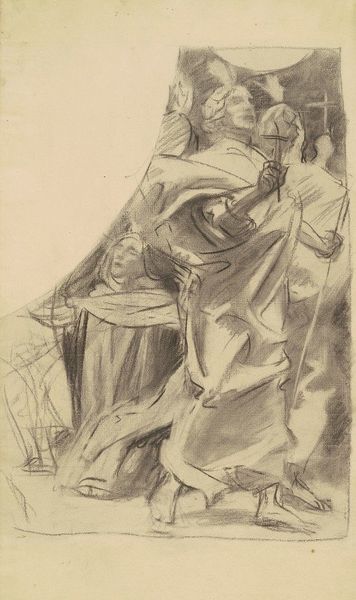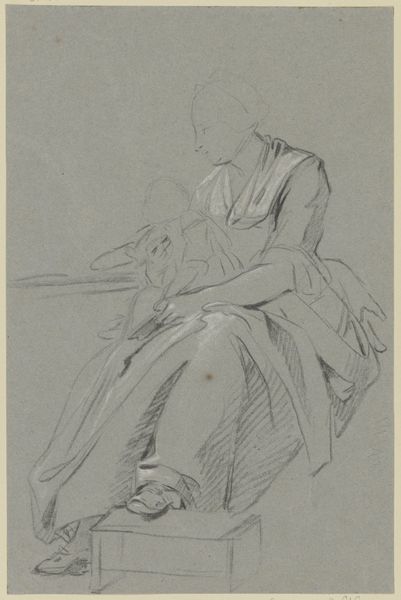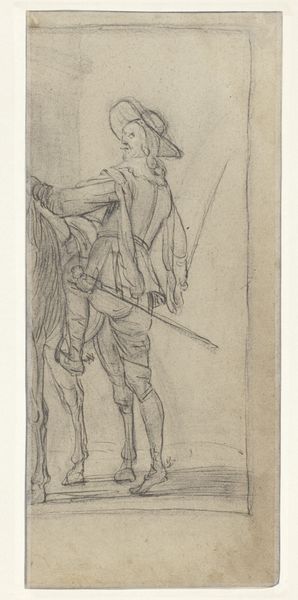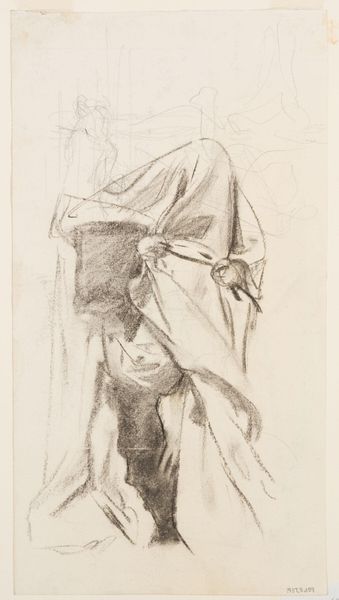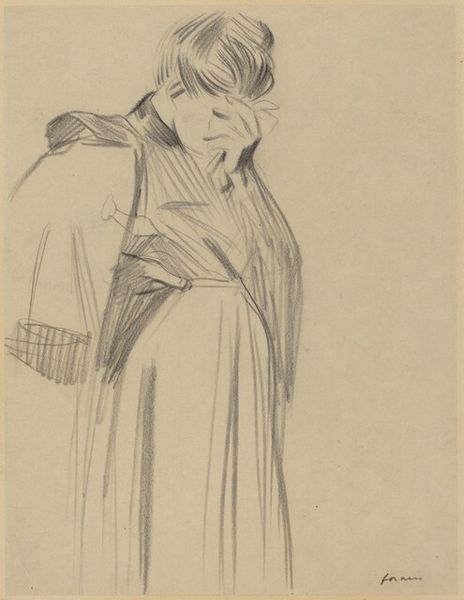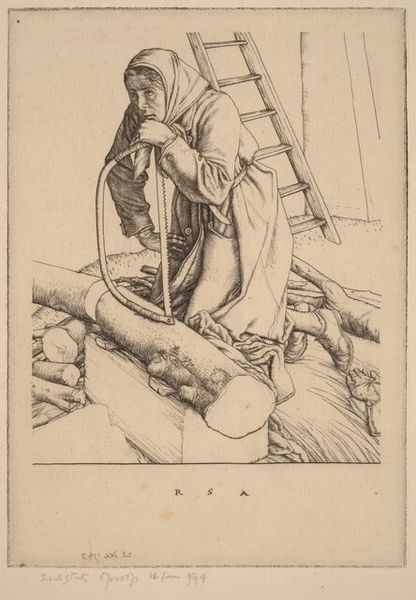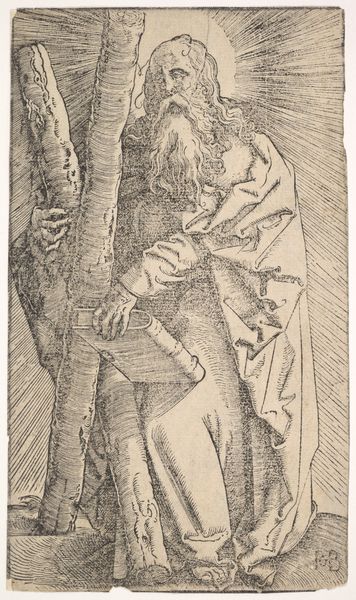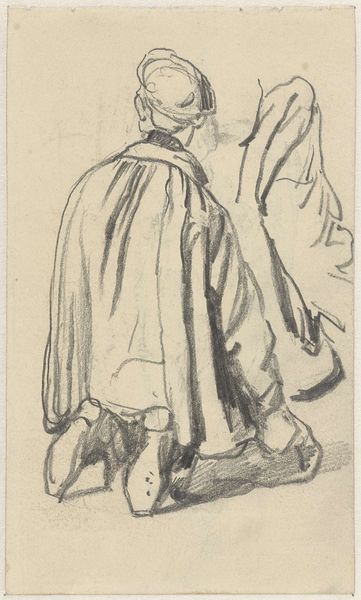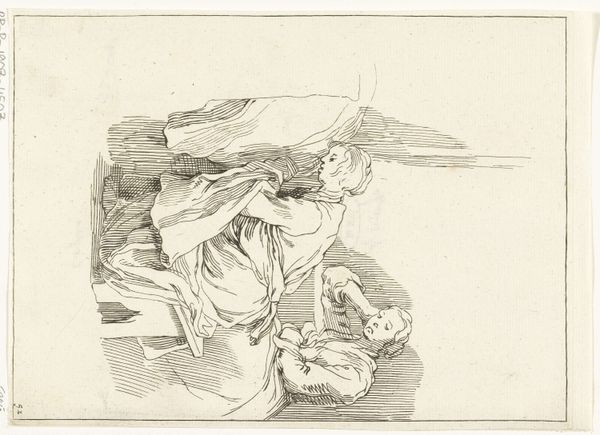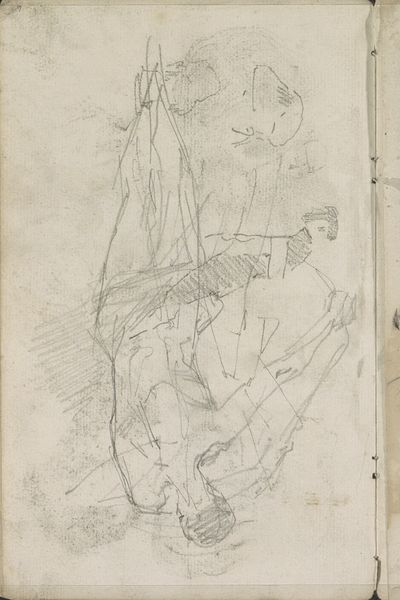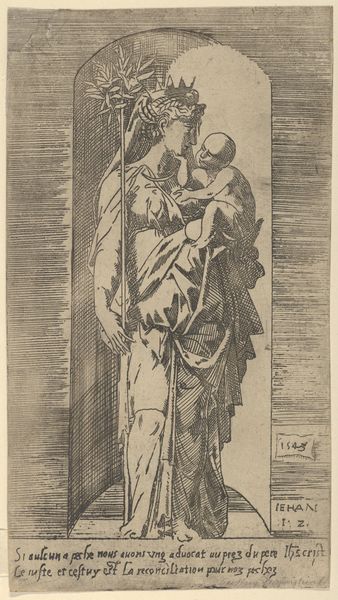
drawing, print, pencil
#
portrait
#
drawing
# print
#
classical-realism
#
figuration
#
pencil drawing
#
pencil
#
france
#
academic-art
Dimensions: Sheet: 18 5/16 x 8 5/8 in. (46.5 x 21.9cm)
Copyright: Public Domain
Curator: Paul Baudry created this pencil drawing, "Study for the Muse Thalia," sometime between 1840 and 1886. Editor: She seems burdened by existence, lost in thought. The pencil strokes are feathery, giving her a ghostly presence, as if she might vanish with a breath. It's surprisingly melancholy. Curator: The melancholy feels tied to her role, doesn’t it? Thalia is, after all, the Muse of comedy and idyllic poetry. There's a certain tension there between expectation and the reality of inspiration. It seems more contemplative than joyful. Editor: Precisely! She holds a theatrical mask in her left hand. It is like a prompt for her required duty but she appears somewhat tormented by the conflict within herself. I can deeply relate. Curator: I find that especially relevant within the context of academic art in France during that period. The pressures to conform, to uphold classical ideals while grappling with a rapidly changing society… I imagine Baudry was channeling some of that tension as well. He aimed to convey her seriousness and perhaps even weariness. Editor: There's something rebellious about depicting a Muse in such a state of quiet reflection, and she's turned inwards instead of directing her attention outward, toward artistic creation. Almost like she is trying to figure out a direction for her own, distinct, life. The flowing robes, however, seem to reinforce the idea of fluidity and effortless divine inspiration. Curator: It’s a push and pull. The softness of the medium juxtaposes the implied weight of her responsibilities. Baudry would continue this study as the muse became one of the ceiling paintings in the Opera Garnier. There Thalia sits with a mischievous glint and bright robes, though perhaps, it is a false portrayal. Editor: It adds layers to understanding how societal roles influence both the artist and the muse, ultimately reflecting back on our own personal negotiations between expectations and inner expression. Profoundly human. Curator: Indeed, thank you for bringing your experience to this drawing. Now that I know she lives at the Met, perhaps I'll stop by more often and say hello.
Comments
No comments
Be the first to comment and join the conversation on the ultimate creative platform.
